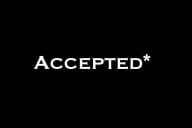You have /5 articles left.
Sign up for a free account or log in.

iStock/Bluehousestudio
In higher education, we see a lot of people who want to work for our institutions because they’re tired of corporate jobs, think that they understand higher ed and believe they have transferable skills. Some of those professionals make great leaders, some fumble at the beginning of their tenure in a new job but quickly figure out how to get things done, and others become more and more frustrated (or frustrating) and eventually leave.
Why, in an era where we are being encouraged to think of many aspects of our colleges and universities as units of a business, do we still see highly accomplished professionals from the business world who stumble so badly that they can’t recover -- or who can’t make the transition to higher education at all?
Part of the answer lies in the ability to understand how crucial networks of influence are at colleges and universities and recognizing that power and influence often flow through informal channels. “Influencers” is a word that’s thrown around a bit, but for the purposes of this discussion, they are people who have the ability to influence the behavior or opinions of others and whose effect on decision making is in some way significant or authoritative. The problem is that networks of influence don’t necessarily follow formal reporting structures, titles or positions in higher education.
When I was a marketing director for a large clinical service line at an academic medical center, I worked closely with staff members in the function called “network development.” Their job is to build relationships between physician practices that can be sources of patient referrals to the academic medical center. A lot of people in those functions come from a corporate sales environment, and I was working with someone who was new to the organization. She presented a plan, and I asked if she had run it by the division chief for that specialty. Her response: “I don’t need to. I report up through the hospital side of the organization, and his opinion is irrelevant.”
I was so shocked that I am sure I was less than articulate in the moment. But I recall saying something to the effect that the cooperation of the faculty in that specialty was most likely contingent on the division chief’s endorsement of the plan and that the faculty really didn’t have a formal obligation to take on the role in outreach that her plan required. My colleague continued to insist that the only person who needed to approve the plan was her boss and her boss’s boss, who “outranked” the division chief, in any case. I wasn’t surprised when she moved on to another organization in less than three months.
Readers with a long tenure in higher education are probably nodding their heads at this point. You know that the informal network of people who are interested in a given issue can help you move your priorities forward or address thorny problems (such as where to cut a budget) yet avoid creating an administration-academic divide or backlash among important stakeholder groups. You also know that sometimes the loudest voices on a given issue are not the most important and that seeking out people who really understand that issue is an essential step in efforts to make positive change -- whether that’s rolling out a new student service, a marketing plan, a policy, a curriculum or a program.
You also need to understand who is credible and why. A recent study by the Media Insight Project, a collaboration between the American Press Institute and the AP-NORC Center, found that the credibility of the person sharing news is more important to how much the recipient trusts the content than the original news source. But how can you best determine who is credible on your campus and whose opinion matters on a specific issue?
You should ask, “Who are the most important stakeholders on this issue?” “Who is likely to have a strong opinion about this change?” “Who is really advocating for this initiative and why?” If you ask these questions of enough people, patterns will emerge that help you identify both the informal and formal influencers. Additionally, people like to give their opinion and will appreciate that you asked.
Also ask which groups have an interest and how to get on the agenda for standing meetings. You will quickly figure out which are most influential. In some institutions, faculty councils or their equivalent are hugely important stakeholders; in others, the real influencers think they’re a total waste of time and wouldn’t attend a meeting if you bribed them with free lunch and unlimited research funds. Often the crucial opinion leaders or groups have influence because of institutional history, so asking someone -- or several people -- to give you the background will position you well to communicate better.
Ask how the deans or other administrators at your college or university make decisions. Are these contentious or cooperative discussions? Are there groups who work together to put forward common interests? Who is going to see your idea as a positive move? Who is going to see it as a threat? Who has already tried this idea five years ago, and how did it turn out?
Finally, when someone gives you good information, new ideas or helps you identify an influencer, give that person credit. Giving credit is powerful, and it’s not a finite commodity. I have been given valuable input in informal discussions, and when I present the idea in meetings where that influencer, their peers or supervisors are present, I publicly recognize their contribution and say how valuable it has been in shaping the proposal, making sure it’s described in a way that meets the needs of all constituents, and avoiding unintended consequences.
Value your colleagues, even when they tell you something you might not want to hear, because no single person in leadership at your institution is as smart as the collective wisdom you can tap through its informal networks.








